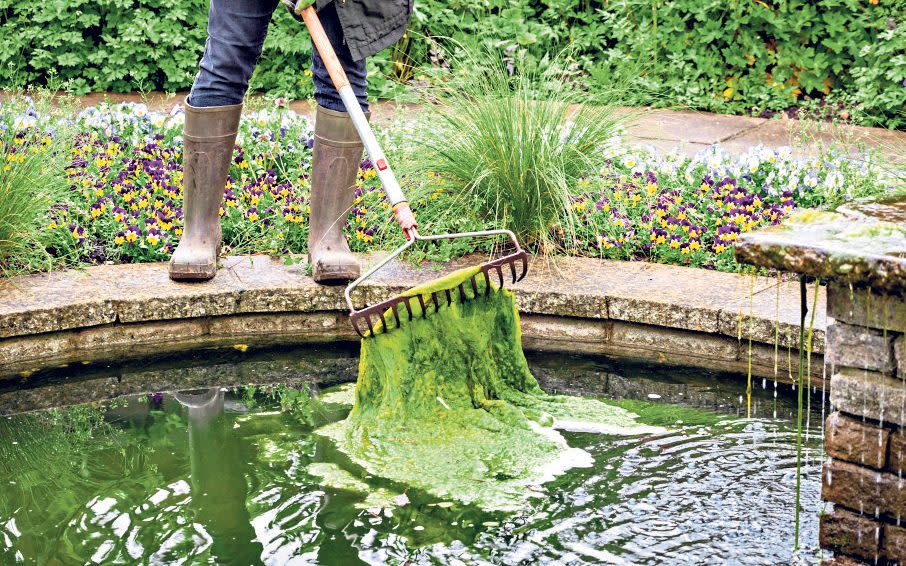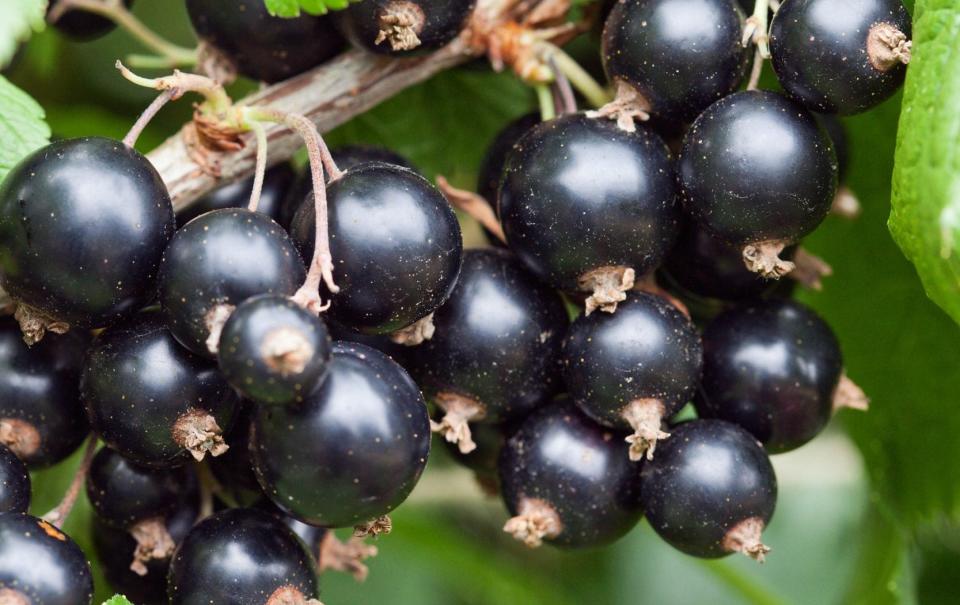Six easy ways to restore a sun-scorched garden

Warm summer days and high light levels can lead to lots of activity in our gardens. Some surges of growth can tip the balance and become problematic, so stay vigilant and try to maintain a harmonious balance. For example, aphids and pond weeds can suddenly take over and become a real headache further down the line unless we spend a few hours this weekend gently and consistently restoring the horticultural equilibrium.
Bug alert

Sap-sucking pests such as aphids transmit viruses and distort young growth on plants. Roses are magnets for these mini beasts, particularly the very top growth and flower buds. Non toxic sprays such as SB Plant Invigorator act as a tonic as well as a pest control. When applying organic or non-toxic sprays, you need only spray the young growth.
Gardening is all about balance with nature; small numbers of any pest are fine but when they get out of hand, it’s worth acting to keep plants in good health.
Pond life

Sunshine and rising water temperatures can send pond weeds and oxygenating plants into overdrive. This is a good time to remove as much weed as possible with a net or plastic rake (which is less likely to puncture the liner than a metal one).
Oxygenating plants are essential for a healthy pond but too much of them can do more harm than good. To expose open water and maintain the natural equilibrium, aim to remove 50 per cent of your oxygenators. Always pile weed beside the pond for 24 hours to allow any tiny pond dwellers to return to the water, before adding the weed to your compost heap.
Beet that

Sowing vegetables in succession is a sure way to keep the supply of fresh veg coming into your kitchen during summer and autumn. Beetroot is an easy to grow veg that can be sown little and often. When I say often – sow a small row every month from April to September. Try growing an unusual golden, white or striped variety – ‘Boldor’, ‘Choggia’ and ‘Albina Vereduna’ are available from Thompson Morgan.
Scented summer

Mock orange (Philadelphus) has intoxicatingly sweet-scented flowers in early summer that bloom on stems that grew the year before.
Once flowers have faded, remove about 20 per cent of the shrub by pruning branches back to a strongly growing shoot. This allows the shrub to put on growth from now until autumn which will provide a great display next summer; then the cycle begins again.
Pruning is about timing and aesthetics. By pruning now, we ensure the best chances for a good display next year but, as with all pruning, shape the shrub in a way that is visually pleasing based on the technique I’ve outlined – take your time and, most importantly, enjoy the process and don’t panic about mistakes.
Two projects to plan

Hydration is the thing
In high summer, camellias and rhododendrons start to develop their flower buds for next year. If they become too dry at this crucial time of year, their flowering performance can be affected.
This is brought into sharp focus when they are grown in pots, so water regularly; plants in the garden also need looking after in prolonged dry periods. Once the ground is moist, whether from a hose or if you use grey water, apply a fertiliser like Vitax Q4 and mulch with well-rotted compost or bark. Rhodies and camellias have shallow plate-like root systems, so any moisture or nutrition is appreciated and accessed very quickly.
Currant events
It’s blackcurrant season so time to dig out that jam recipe and think about sorbets. There are two options when it comes to pruning: do it in early spring or now, as you harvest the fruit. With pruning, we are looking to rejuvenate the shrub and keep a constant supply of fresh stems coming from the base to give years and years of fruit.
Look at your blackcurrant bush: if two or three older stems are laden with fruit, remove them at the base, fruit and all, making sure that you achieve a balanced goblet shape in the process. You can then harvest the fruit by picking the currants off the detached stem while enjoying a cup of tea – very civilised! By pruning your blackcurrant now, very little will be needed next spring.
Tom Brown is head gardener at West Dean Gardens, West Sussex


